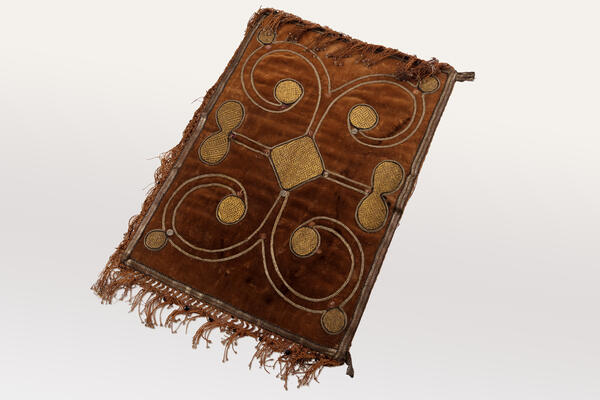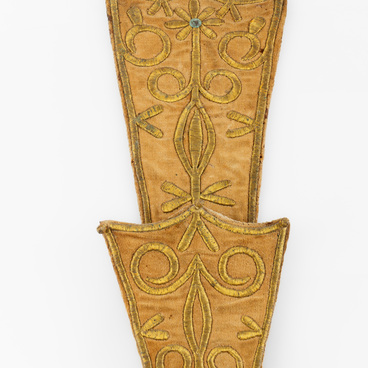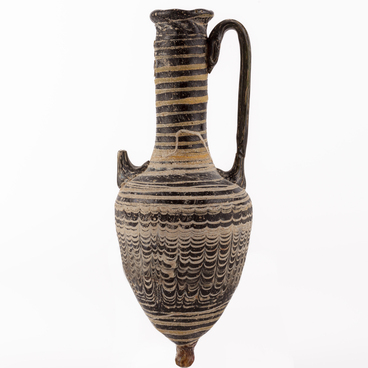Traditional Circassian handheld fans look quite different from European folding fans. Instead, they rather resemble a rectangular flag, which is called “zhyyf” in the Adyghe language. Circassians began to use hand fans at the turn of the 19th century, but these objects were always more than an exclusively women’s accessory. Initially, the fan was used to blow on a fire to keep it burning in the fireplace. Since ancient times, the cult of fire occupied an important place in the Adyghe beliefs. Fire was perceived as a living entity, and it was revered as a deity. The phrase “May the fire die out in your hearth” was considered the most terrible curse, since the hearth was directly related to the well-being of the inhabitants of the house. And the handheld fan, which was used to blow on the fire, was considered a sacred attribute.
Initially, fans were made of straw or dried marsh grass and lined with velvet. Later they were made on a rigid cardboard base measuring 25 by 30 centimeters. The fan was decorated with embroidery made with silver or gold threads and fringe sewn along the edges. The entire surface of the fan was filled with an exquisite ornamental motif.
The velvet fan from the permanent exhibition is decorated with the oldest and most valuable kind of gold embroidery — couching. Working in this technique, the craftswoman pricked the contour of the pattern on the fabric using a stencil, and then embroidered it without any auxiliary devices. Such work required pinpoint precision, high concentration and a lot of time. For example, a girl could spend several weeks embroidering a small circle with a diameter of only a few centimeters. Apart from being embroidered, the fan is also decorated with gold braid, which looks like a complex chain. Such a gold or silver cord was first used as a separate element — a necklace, a cord for a watch or a revolver. It was also used to make a ball — a button for the top of a women’s Circassian cap.
When it was completed, the handheld fan was fastened with loops to a carved wooden handle, around which it rotated. Only older members of the family could fan themselves with such a fan in the heat. Sometimes the fan was used to care for the sick, or it was placed on the crossbar of a cradle, and when the crib was rocked, the fan produced a pleasant feeling of coldness. The fan is trimmed with a fringe of threads decorated with transparent and black beads.
Initially, fans were made of straw or dried marsh grass and lined with velvet. Later they were made on a rigid cardboard base measuring 25 by 30 centimeters. The fan was decorated with embroidery made with silver or gold threads and fringe sewn along the edges. The entire surface of the fan was filled with an exquisite ornamental motif.
The velvet fan from the permanent exhibition is decorated with the oldest and most valuable kind of gold embroidery — couching. Working in this technique, the craftswoman pricked the contour of the pattern on the fabric using a stencil, and then embroidered it without any auxiliary devices. Such work required pinpoint precision, high concentration and a lot of time. For example, a girl could spend several weeks embroidering a small circle with a diameter of only a few centimeters. Apart from being embroidered, the fan is also decorated with gold braid, which looks like a complex chain. Such a gold or silver cord was first used as a separate element — a necklace, a cord for a watch or a revolver. It was also used to make a ball — a button for the top of a women’s Circassian cap.
When it was completed, the handheld fan was fastened with loops to a carved wooden handle, around which it rotated. Only older members of the family could fan themselves with such a fan in the heat. Sometimes the fan was used to care for the sick, or it was placed on the crossbar of a cradle, and when the crib was rocked, the fan produced a pleasant feeling of coldness. The fan is trimmed with a fringe of threads decorated with transparent and black beads.



